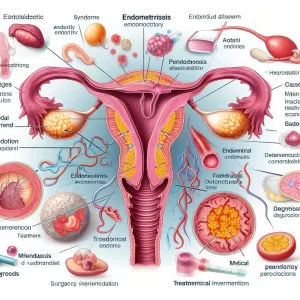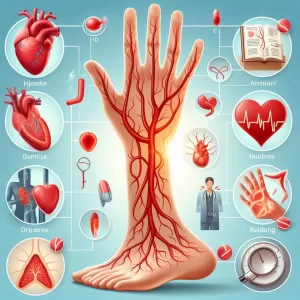What is Electrocauterisation: Overview, Benefits, and Expected Results
Definition & Overview
An electrocauterisation is a surgical procedure that uses electricity to heat specific tissues in the body to control bleeding, remove abnormal tissues, and prevent infection, among many others. It can be performed on several different parts of the body and is used in various branches of medicine including dermatology, ophthalmology, urology, and oncology. Due to its many indications, it is considered a safe routine procedure with minimal risks involved.
Who Should Undergo and Expected Results
Electrocauterisation is a highly versatile medical procedure that serves a range of medical purposes. Thus, a lot of people suffering from a diverse range of medical conditions may benefit from it. These include those who suffer from:
- Abnormal tissue growths, including benign and malignant tumors – As a rule, tumour removal through electrocauterisation is used only on skin lesions that are located in sensitive or hard-to-reach areas, such as the brain, as well as tumors that do not require a histological review.
- Skin lesions – Skin warts are some of the easier tissue growths to remove using electrocauterisation. Thus, wart removal through electrocautery normally requires just one treatment.
- Abnormal inflammation of some tissues in the body
- Infection of some tissues in the body
- Gangrene
- Dry eye syndrome – In such cases, electrocauterisation is performed as part of a procedure called punctual occlusion. Studies show that this helps patients achieve higher visual acuity than dry eye syndrome treatments.
- Bleeding due to injury or surgery – The procedure can be used to reduce or stop bleeding after an injury or to prevent bleeding during a surgical procedure. This is achieved by sealing off affected blood vessels using heat.
- Frequent nosebleeds – One of the most common causes of persistent nosebleeds is an exposed blood vessel in the nose. In such cases, electrocauterisation can be used to seal the affected blood vessel to prevent recurrences.
Additionally, the procedure can be used when performing vasectomy. Research suggests that electrocautery is a more effective vasectomy method than clipping and excision.
Some patients, however, are not good candidates for an electrocautery procedure. These include those who have a family history of bleeding disorders as well as those who have to take blood-thinning medications for another health problem. These medications include aspirin, warfarin, and ibuprofen, to name a few.
How is the Procedure Performed?
As a simple, minimally invasive procedure, electrocauterisation requires minimal preparation. If meant to address a bleeding problem, the patient will have to undergo a blood test to make sure that blood-thinning and clotting disorders are not a factor. On the other hand, if the patient is being treated for a cervical wart or tumor, a vaginal discharge study and a pap smear are in order prior to the procedure.
On the night before the procedure, patients are advised to refrain from eating or drinking anything after midnight. Smoking should also be avoided.
On the day of the surgery, the doctor will first place a grounding pad on the patient’s thigh, which serves as the primary protection against electric current. The treatment site is then cleaned and coated with a protective gel. An anesthesiologist will also be part of the surgical team to administer the anesthesia, which can be either local or general, depending on the purpose of the procedure.
Once the patient is ready, the doctor uses a small probe with a heated tip to apply heat to the selected body part. The electric current will then run from the probe to the skin and down to the targeted tissue. The surgeon continues this procedure until all affected tissues are treated. Due to this, the length of the procedure, as well as the subsequent recovery period, may vary greatly, depending on the size of the treatment area or the size of harmful or abnormal tissues that have to be removed. If the treatment area is of moderate size, the procedure may take between 15 and 30 minutes. On the other hand, recovery may take anywhere between two and four weeks, unless extremely large areas of tissues are treated, in which case the recovery may take even longer.
The electrocautery device uses advanced technology to deliver heat to highly precise locations in the body. Each device is capable of delivering heat ranging from 100 and 1200 degrees Celsius.
It is normal to experience some swelling, redness, and mild discomfort at the surgical site after the procedure. However, this should subside and disappear within a few hours.
Possible Risks and Complications
Since it is a common and simple procedure, electrocauterisation comes with minimal risks. These include:
- Slight bleeding
- Pain
- Mild discomfort
- Infection
- Damage to nearby tissue
- Burns
For the comfort and protection of patients, physicians typically prescribe pain medications and antibiotics following the procedure.
The risk of these complications occurring following surgery is higher among patients who are older, who frequently smoke, and who suffer from other medical problems, such as:
- Obesity
- Diabetes
- Kidney problem
- Liver problem
- Hypertension
- Poor lung function
- Malnutrition
- Bleeding disorders
- Immune system disorders or autoimmune disorders
Chronic infections
Additionally, the procedure can trigger some negative reactions from the body due to its use of anesthetics. Thus, patients who meet certain risk factors that make them susceptible to complications caused by the use of anesthesia should not undergo the procedure. These risk factors include:Any medical condition involving the lungs, heart, and kidneys
- Sleep apnoea
- Obesity
- Alcohol consumption
- Smoking
- Allergies to medications and certain foods
Family history of anesthetic complications
This precaution is to protect patients from serious long-term complications caused by allergies to anaesthetics, such as heart attack, stroke, and lung infection.
References:Saaiq M., Zaib S., Ahmad S. (2012). “Electrocautery burns: experience with three cases and review of literature.” Ann Burns Fire Disasters. 2012 Dec 31;25(4):203-206. http://www.ncbi.nlm.nih.gov/pmc/articles/PMC3664530/
Moreira C., Amaral E. (2014). “Use of electrocautery for coagulation and wound complications in caesarean sections.” The Scientific World Journal. http://www.hindawi.com/journals/tswj/2014/602375/
/trp_language]
## Electrocauterisation: An Overview, Benefits, and Expected Results
**Introduction:**
Electrocauterisation, also known as electrosurgery, is a surgical procedure that uses electrical current to cut or remove tissue. It is commonly employed in various medical disciplines, including dermatology, gynecology, urology, and otolaryngology.
**Procedure Overview:**
During electrocauterisation, an electric current is applied to tissue using a specialised probe. The current generates heat, which cauterises (burns) the tissue and stops bleeding. The probe can be adjusted to different temperatures and shapes, enabling precision and flexibility during surgery.
**Benefits of Electrocauterisation:**
* **Precise and Controlled:** The heat generated by electric current allows for highly targeted and controlled tissue removal, minimising damage to surrounding healthy tissue.
* **Minimal Bleeding:** Cauterisation effectively seals blood vessels, significantly reducing bleeding during surgery.
* **Versatile:** Electrocauterisation is suitable for various tissue types, including skin, mucous membranes, and blood vessels.
* **Faster Healing:** By reducing bleeding and promoting coagulation, electrocauterisation speeds up wound healing.
* **Minimal Scarring:** The cauterisation process often results in reduced scarring compared to traditional surgical techniques.
* **Fewer Infections:** The precision and sterilisation of electrocautery probes minimise the risk of infection.
**Expected Results:**
The expected results of electrocauterisation vary depending on the specific surgical procedure. However, in general, patients can expect the following:
* **Removal of Targeted Tissue:** Effective removal of unwanted tissue, such as skin lesions, tumours, or bleeding vessels.
* **Reduced Pain and Discomfort:** Post-operative pain and discomfort are typically minimal due to cauterisation of nerve endings.
* **Rapid Recovery:** Wound healing is often quicker and less painful compared to traditional surgical techniques.
* **Aesthetic Improvements:** In cosmetic procedures, electrocauterisation can achieve desired skin tightening or wrinkle reduction.
* **Improved Function:** Electrocauterisation can restore function in organs or structures affected by obstructing tissue.
**Conclusion:**
Electrocauterisation is a versatile and effective surgical technique that offers numerous benefits, including precision, reduced bleeding, faster healing, and improved function. It is commonly employed in various medical fields for a wide range of surgical procedures, providing patients with optimal outcomes and minimal discomfort.
2 Comments
Leave a Reply
Popular Articles








Electro-Cauterization: Definition, Advantages, and Anticipated Outcomes
Electro-Cauterization :An Overview of Benefits and Aims